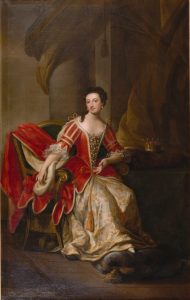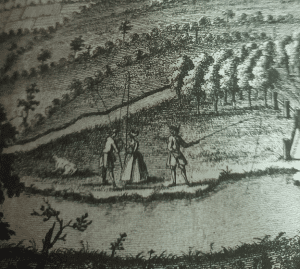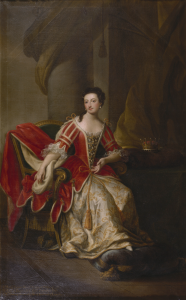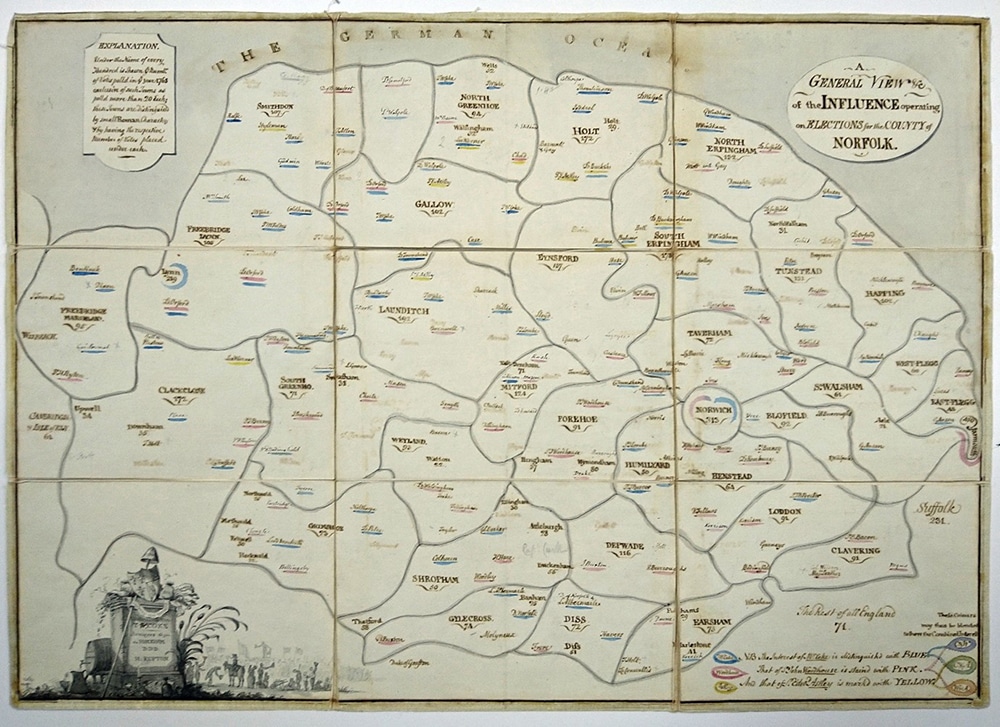
Thomas William Coke: local politics and a force to be reckoned with in the creation of an independent America
January 20, 2021 | Treasure tales and archive snippets | 4 minute read

Recently I was looking at very interesting document made by Humphry Repton, the ‘go-to’ landscape gardener of Georgian England. However, it had absolutely nothing to do with gardens. It is titled ‘A General View of the Influence operating on Elections for the County of Norfolk’. Repton was a great friend of the British Whig Statesman William Windham and had even acted as his agent in the 1784 election for Norwich. Repton saw the drafting of map as an opportunity to gain favour with Thomas William Coke, the Whig politician, and agricultural reformer.
This map of influence was made to show the allegiances of the principal families in Norfolk as well as the numbers of votes polled in each hundred and town totalling over twenty. The different colours show the influence of Thomas William Coke in blue, Sir John Wodehouse in pink and Sir Edward Astley in yellow. It’s a curious map, showing the state of the county in 1768, created two years before the 1790 election that saw Thomas Willliam Coke and Sir John Wodehouse being returned to parliament. I particularly like the vignette in the bottom left corner showing the more onerous side of electioneering namely a speaker surrounded by a riotous crowd and around the plinth (with the Coke family motto) are two important vote winning tactics: piles of money and free-flowing beer!
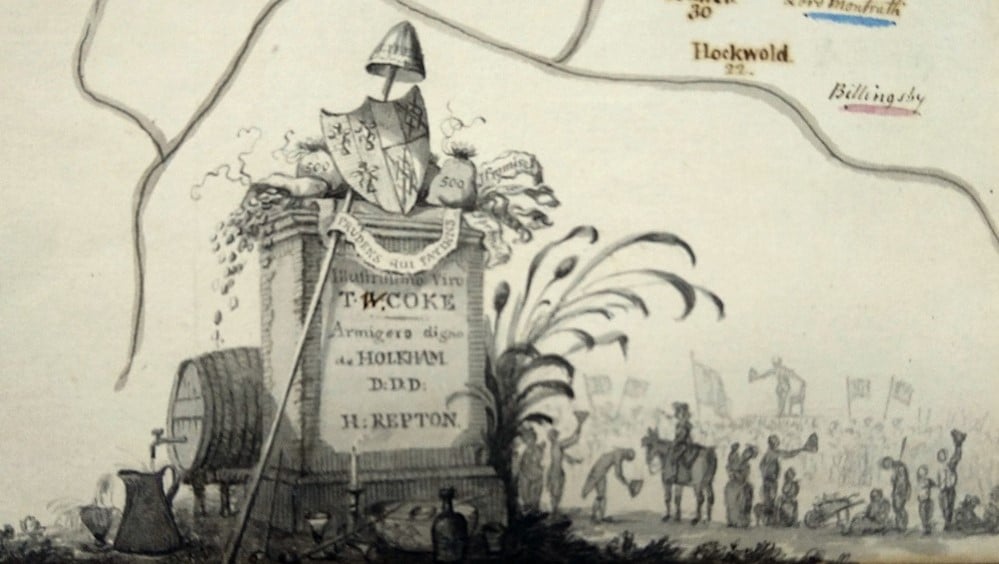
Close-up of vignette
During the reporting of the recent presidential election across the pond, with the endless maps and statistics that were analyzed to predict the outcome, I was reminded of this map made over 200 years ago and I also thought about Thomas William Coke’s strong stance on America. Thomas William Coke, with Charles James Fox, was a strong advocate for ending the war against the former colonists. As a great admirer of George Washington, frequently Coke would drink to the first president’s health when dinners were held at Holkham. In the archives there is a collection of letters from American correspondents who recognized and shared the opinions of Thomas William Coke.
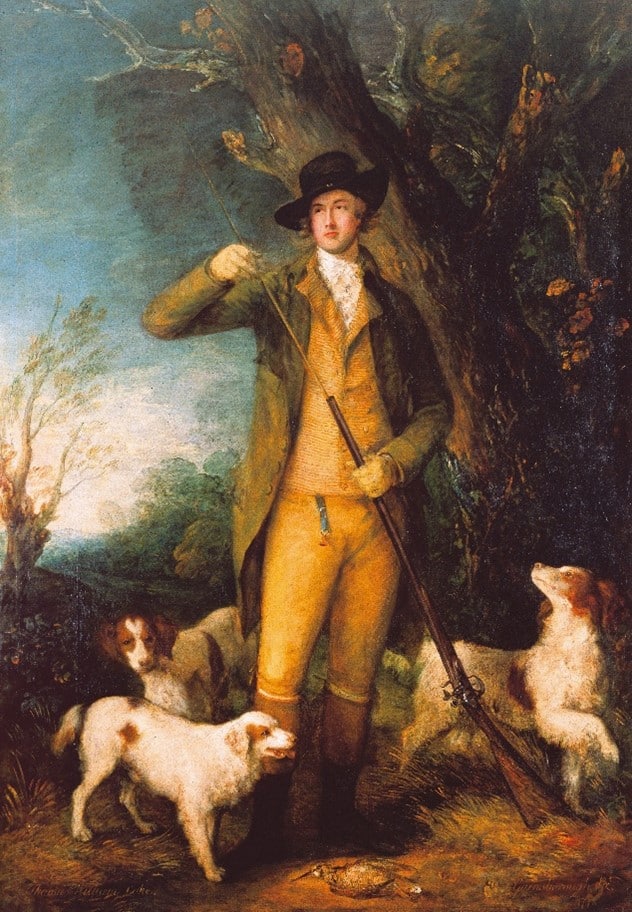
Thomas William Coke, by Gainsborough
In the South Dining Room there is this full-length portrait of Thomas William Coke by Thomas Gainsborough. He is shown wearing a country suit with a nod to George Washington’s distinctive blue sash at his waist. Here is the young commoner surrounded by spaniels (perhaps the new ‘Clumber’ breed) and a woodcock, possibly with the Derbyshire countryside of his childhood behind him.
This suit was famously worn in 1778 to present a petition to the King and Parliament against the war with America to which the Whig party was opposed. As a Knight of the Shire, he was able to appear at court ‘in his boots’ – a privilege, if ever, exercised. On this occasion, Coke used it to demonstrate the strength of feeling in the country on this issue. He later recalled ‘I was the individual who moved to put an end to that war; and it was carried by a majority of one, the numbers being 177 to 178. I was the only member out of twelve in this county who voted against the war; and I thank God for it; I look back with satisfaction to that conduct and have followed the same principles ever since.…I carried up the address as an English country gentleman, in my leather breeches, boots and spurs.’ This painting was started in 1778, when Coke was just 24, and Gainsborough was to stay at Holkham at various times to paint this portrait over the next eight years. It was completed 1786 and originally was hung in the Saloon – clearly for Coke it was vital to remember and remind his guests of this most important event in his history as well as the country’s. As the 46th president is sworn in, I will be thinking about the crucial role Thomas William Coke had in shaping an independent America.
View all latest blog posts here.
Back to Journal Back to Journal